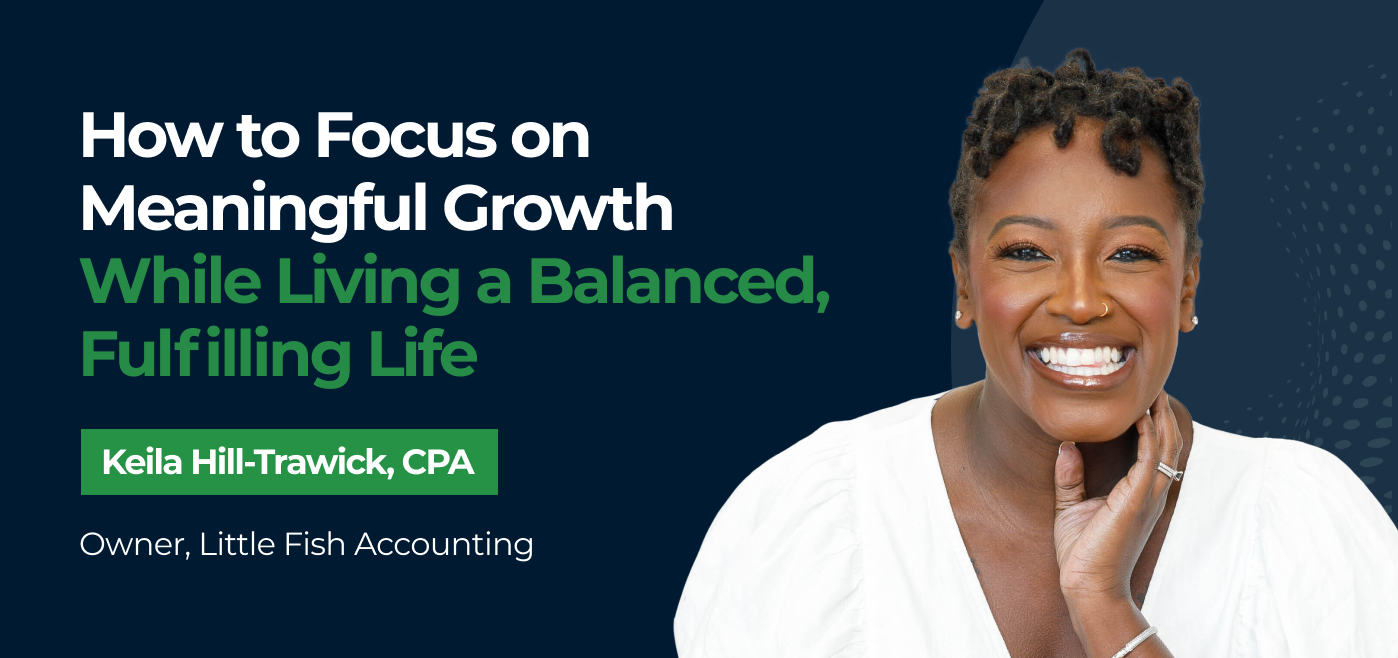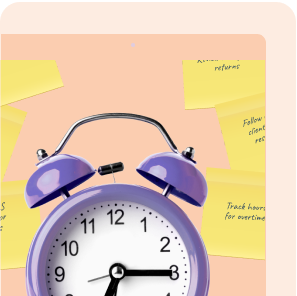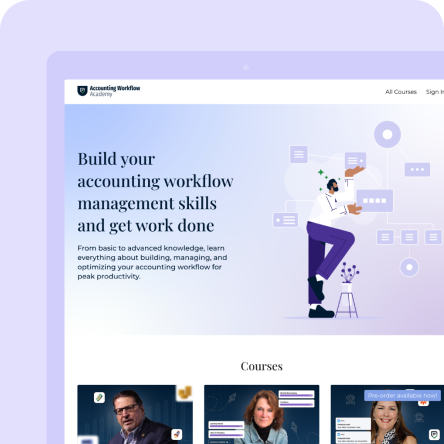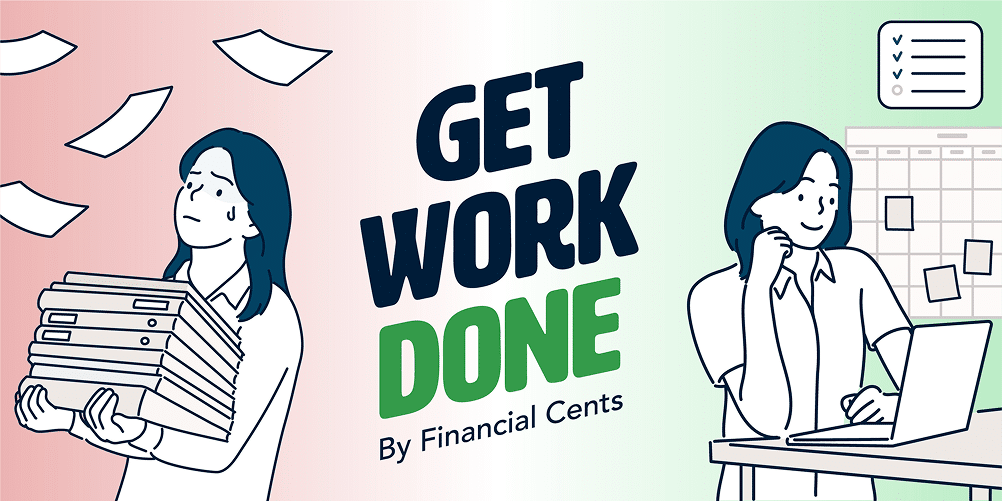You didn’t start your business to work 80 hours a week. You didn’t leave your 9-to-5 to be chained to your inbox. So why does growth feel like dragging you away from the life you wanted to build?
If you’ve ever wondered how to grow your business without losing yourself, Keila Hill-Trawick of Little Fish Accounting delivered the blueprint at WorkflowCon 2024. Keila’s approach isn’t about hustle. It’s about intention.
I really wanted to look at this from the start as a business that could support my life, and the lives of my clients,"
KeilaLet’s explore her seven-step framework, which will help you grow on purpose, design a business that reflects your values, and live a life that actually feels like freedom.
Step 1: Define Your Version of Enough
You didn’t start your firm to burn out.
But if you’re constantly overwhelmed, stuck in a loop of taking on more clients, more software, more responsibility, you might be building a business that drains you instead of fuels you. Keila Hill-Trawick knows this pattern well. She shared a pivotal moment that reshaped her business mindset.
I remember venting to my husband about how hard it was, and he said, ‘You built this. You could’ve built anything and you made something you hate.’"
That realization forced her to ask the harder question: was she growing in a way that aligned with her values or just reacting to opportunity and pressure?
Redefine What “Success” Looks Like For You
The truth is, your version of success doesn’t have to look like rapid scaling, a massive team, or crossing the million-dollar mark. Keila’s approach invites you to create your own definition of success, something she calls your version of enough. It could be as simple as being off by 5 p.m. every day, having Fridays completely free, or taking a full month off each year. It could be seeing fewer clients but offering higher value services. Your “enough” is the unique combination of income, time, autonomy, and emotional bandwidth that lets your business support your life not take it over. As Keila puts it,
Success isn’t just revenue. It’s sustainability, time ownership, and peace of mind."
Make Enough Your Strategic Filter
Once you define your version of enough, it becomes your strategic filter for every decision. You stop saying yes to clients just because they ask. You stop launching services just because there’s demand. You stop chasing revenue just because someone else is. With enough clearly in focus, you gain the confidence to say no to things that don’t serve your life. “It may mean less revenue,” Keila said. “It may even mean an investment year. But all of that should be in service of where you’re actually trying to go.” Enough becomes the compass that steers you away from burnout and toward intentional, values-driven growth.
Step 2: Grow Intentionally
It’s easy to fall into the trap of reactive growth. You land one new client, then another, and then hire someone just to keep up. Before long, your business is scaling—but you’re not in control. Keila Hill-Trawick sees this cycle happen all the time. “We get caught up in this hamster wheel—more clients, more team, more revenue. But we never stop to ask, ‘Do I even want this version of big?’” If you’re not steering the ship, the market will do it for you. And that’s how you end up overwhelmed, overworked, and disconnected from the business you set out to build.
Ask Yourself the Hard Questions Before You Scale
To avoid reactive scaling, you need a framework that grounds your decision-making. Keila outlined four powerful questions that every entrepreneur should ask before taking any next step in growth.
- What does our business actually need right now? This helps you strip away the noise. Maybe you don’t need a new tool or a bigger team. Maybe a spreadsheet still works. Keila cautioned against “shiny object syndrome”—the temptation to overcomplicate systems just because a new solution exists. Stay lean if lean works. Upgrade only when the old process truly limits your progress.
- How will this impact our clients, team, and culture? Every change you make—whether it’s new software, a new hire, or a new offer—affects more than just your bottom line. “Your team has processes they’re used to. Your clients have expectations. If your growth disrupts that, it needs to be a strategic decision, not a reactive one,” Keila emphasized. Consider how this move affects workflows, morale, and the consistency of your client experience.
- Is this aligned with our long-term vision, or is it a reaction to pressure? Not every dip in revenue is a sign to pivot. Not every new trend requires you to adjust your business model. Sometimes, the right move is to stay the course. “It may look like a short-term loss, but if it’s in service of your long-term vision, that’s still progress,” Keila reminded attendees.
- How will this impact me as the owner? This is often the most overlooked question—but perhaps the most important. Will this decision add to your stress or subtract from it? Will it bring you closer to your role as a visionary—or further into the weeds? Every growth step should either delegate, automate, or elevate your role—not entrench you deeper into operations.
Step 3: Build Around the 4 Pillars of Sustainable Growth
Once you know what your version of enough looks like and you’ve committed to growing with intention, the next step is to build the foundation that makes that growth sustainable. You can’t rely on adrenaline and last-minute fixes forever. You need structure that supports you and scales with you. Keila Hill-Trawick laid it out clearly: if you want a business that respects your boundaries, your time, and your vision, you have to architect it deliberately.
Her framework? Four core pillars that ground your business in sustainability: branding, services, structure, and client experience.
Pillar One: Branding That Attracts the Right People
Branding is not just your logo or color palette. It’s how you signal who you are, who you serve, and how you serve them. Keila explained that branding is really about connection. “Branding ensures that you’re working with people you want to work with,” she said. That means every message you put out—on your website, social media, proposals, even email signatures should be in alignment with your core values and ideal audience. The more clearly you speak to your niche, the more your marketing pre-qualifies the right people.
If your brand attracts everyone, it’s not attracting anyone specifically enough. That’s why Keila’s firm, Little Fish Accounting, branded themselves to serve solo business owners with small teams in professional services. “We say no a lot now,” she admitted. “And that makes it easier to say yes to the right ones.”
Pillar Two: Service Offerings That Align With What You Love
One of the biggest blocks to sustainable growth is trying to do everything for everyone. Keila’s philosophy is simple: offer what energizes you and eliminate what drains you. If you hate taxes, don’t offer taxes. If you love strategic planning, build packages around that. Start by listing everything you currently do, then remove anything that feels heavy or frustrating. What’s left is your sweet spot.
She also emphasized the importance of thinking in packages, not one-off tasks.
“You might be offering a $150 service that costs you way more in time and admin. But that same service can fit into a higher-value, more strategic package,"
KeilaBundling services lets you provide more value with less stress and makes pricing cleaner and more scalable.
Pillar Three: Structure That Makes Growth Repeatable
Growth isn’t sustainable if every new client or project feels like starting from scratch. Keila encourages you to create repeatable systems that standardize delivery without compromising quality. For her firm, that meant a simple but powerful rule: every client starts on the first of the month. No exceptions. This one system sets internal cadence, simplifies onboarding, and avoids client-by-client chaos. “Your way doesn’t have to look like ours,” she said. “But you need to define it. Repeatability is what gives you room to breathe.”
This kind of structure doesn’t just streamline operations, it allows your team to help you scale. When everyone understands how things work, you don’t need to be involved in every detail. That gives you time to focus on strategic growth, not daily logistics.
Pillar Four: Client Experience That Balances High-Touch and Boundaries
Keila’s final pillar is all about delivering an exceptional client experience—without burning out. It’s not about being constantly available. It’s about being consistently reliable.
We take high-touch seriously. But we also don’t have a phone number you can call. We schedule everything. That’s our boundary"
KeilaYou don’t need to be everything to everyone. You need to be crystal clear on how you work, when you’re available, and how communication flows. Clients will respect it, if you train them to. Combine this with thoughtful automation (reminders, document requests, status updates) and you create an experience that feels personal and responsive without being 24/7.
When you pair high-touch service with smart systems, you not only wow your clients, you also protect your peace.
Step 4: Align Your Team With Your Vision
If you wait until you’re overwhelmed to bring on help, you’ve waited too long. Hiring before you’re “ready” creates the space you need to step out of constant execution and into leadership. You can’t focus on strategy and sustainability if you’re buried in deliverables. The faster you get core tasks off your plate, the sooner you can start shaping the business you actually want to run.
Delegate the Work You Don’t Need to Own
Hiring only works when you let go of control. Delegation is the only way to create margin in your day. You can’t scale if every task still depends on you. Start with clear responsibilities, document your expectations, and allow your team to take ownership. If you’ve hired well, you don’t need to micromanage. You need to trust. This doesn’t mean abandoning oversight, it means empowering capable people to deliver results without your constant involvement.
Define Roles Based on the Business You’re Building
Build roles around your long-term vision, not just your current to-do list. Think about what your business will need six months or a year from now. Then hire accordingly. Don’t just fill gaps, build infrastructure. When you create roles with forward momentum, you reduce turnover and develop internal leaders who grow alongside your firm. Be honest about what you know, what you don’t, and what your expectations are. This creates alignment between you and the person you’re hiring, and that alignment is what keeps teams strong.
Prioritize Cultural Fit and Working Style Compatibility
Skills can be taught, but alignment is non-negotiable. Hire people who understand your values, who thrive in your workflow, and who contribute positively to your culture. It’s not enough that someone is competent, they need to be a match for how you do business. If you like asynchronous work and they need constant meetings, it won’t work. If you value autonomy and they need micromanagement, you’ll both be frustrated. Be transparent about how your firm operates and find people who thrive in that environment.
Invest in Documentation Early
Documentation is not optional if you want to scale sustainably. Standard operating procedures reduce dependency on any one person including you. Even a simple video walkthrough or a checklist can save hours in onboarding and training. Every repeatable process should be documented. This protects your time, empowers your team, and ensures consistency across the board. The more you document, the less your business relies on your memory or availability.
Step 5: Design a Client Experience That Doesn’t Drain You
Clients will meet the expectations you set. If you leave your boundaries open-ended, they will call, email, and message you whenever it’s convenient for them. If you want a business that doesn’t constantly interrupt your personal time, you need to establish those boundaries from the first interaction. Decide what communication channels are acceptable, how quickly you respond, and what your availability looks like. Communicate this during onboarding and reinforce it consistently.
Simplify Access to Information
You should not have to chase clients for documents, updates, or instructions. Give them a centralized portal where everything lives. Store resources, FAQs, and timelines in a location that’s always accessible. When clients know where to go, they rely less on you and feel more confident about your process. This keeps them happy and keeps your inbox clear.
Use Automation to Support a High-Touch Feel
You don’t need to be glued to your inbox to create a high-quality experience.
A strong client journey is powered by thoughtful automation. Use scheduling tools, automatic reminders, and task management systems to guide your clients through each step without you having to manually intervene. These touchpoints can feel personalized when they’re done well, and they reduce the mental load on you and your team.
Stay Proactive With Communication
Clients want to feel seen and supported. That doesn’t mean they need daily updates. It means they want to know you haven’t forgotten about them. Build a communication cadence into your workflow so they hear from you at regular intervals. Whether it’s a project status email every two weeks or a monthly check-in, proactive contact reassures them and prevents them from reaching out in a panic.
Don’t Offer What You Can’t Sustain
If your onboarding or client experience feels overwhelming, you’ve likely promised too much. You don’t need to offer 24-hour response times or unlimited calls to create value. Focus on doing fewer things well and setting limits that you can consistently meet. You’re building a firm that’s meant to last, not one that exhausts you with every new client.
Step 6: Let Technology Do the Heavy Lifting
Technology should make your life easier. If your tech stack feels overwhelming, you’re using too much or the wrong tools. Keila Hill-Trawick made it clear that tech isn’t about having the latest and flashiest software. It’s about creating ease in your business.
We’re not chasing shiny objects. We’re building systems that feel like breathing"
KeilaStart with the basics. Use a reliable scheduling tool so clients can book time without emailing back and forth. Add e-signature software so agreements are smooth. Store all files in a cloud-based system clients can access anytime. Each tool you choose should remove friction, not create more of it.
Automate Routine Processes First
You don’t need to automate everything. You need to automate the right things. Look at your week and identify the tasks that are repeated often. Focus first on scheduling, document requests, client follow-ups, invoice reminders, and onboarding emails. These are low-effort areas with high return. Keila shared that one of her team’s biggest wins came from automating new client onboarding.
Once the contract is signed, our system sends them everything they need to get started. I don’t touch it, and they feel like they’re being held the entire way."
This kind of automation frees up your time for the work that matters most and ensures clients have a consistent experience every time.
Teach Clients How to Engage With Your Tools
Technology only works if your clients know how to use it. If you want them to upload files instead of emailing you, teach them how to do that. Provide simple videos or PDF walkthroughs. Create checklists that show them what to expect. Keila emphasized that most client mistakes aren’t about defiance. They’re about confusion.
People aren’t trying to be difficult. They just don’t know what to do. It’s our job to guide them"
KeilaThis education ensures smoother processes, reduces support tickets, and gives your clients the confidence to engage on their own.
Don’t Let Tech Replace Connection
Tech should support your client experience, not replace it. Automations are great for consistency, but real relationships still need a personal touch. Keila talked about pairing automation with human warmth. “We automate the reminder emails, but we still show up like real people when we meet. That balance is everything,” she explained.
Use tools to create space, not distance. When technology handles the repetitive tasks, you have more room for strategic work, intentional conversations, and meaningful leadership.
Step 7: Build Your Roadmap to a Fulfilling Life
Fulfillment is personal.
It doesn’t follow a formula. For some, it might mean working three days a week. For others, it could be traveling often, leading a team remotely, or working deeply with just a handful of clients. Ask yourself what makes you feel energized, grounded, and proud of how you spend your time. Keila emphasized the need to get honest about what truly brings you joy. “You might realize that you don’t need to make more money. You just need more control over your time,” she said.
Your roadmap to fulfillment isn’t a spreadsheet. It’s a values-based plan. It reflects what matters most to you and keeps you accountable to living that out.
Fulfillment also requires support. You can’t be the bottleneck in every decision. You need people, systems, and documentation that allow the business to operate without your constant involvement. Delegate with clarity. Equip your team with everything they need to do their jobs confidently. Build processes that answer questions before they get asked. When your business can run without you, you gain the freedom to choose how and when you show up.
Keila reinforced the idea that letting go is an act of trust. “You don’t hire people just to fill seats. You hire them so you can stop doing everything yourself. But you have to actually let them lead,” she said.
Build an Accounting Firm That Honors Your Life
You didn’t choose entrepreneurship to be exhausted. You didn’t set out to grow your firm just to lose yourself in the process. This framework is your reminder that it’s possible and necessary to grow meaningfully while living a life that feels fulfilling and balanced.
While there’s no perfect version of balance, there is alignment. And when your business reflects your values, your energy, and your priorities, that’s where fulfillment lives.






